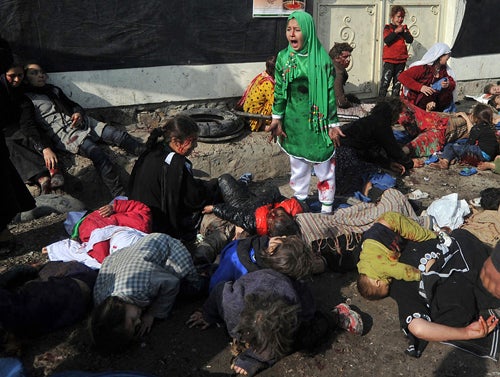Aftermath of Graphic Pulitzer Winning Photo Sparks Ethics Debate
News outlets debate how to show the powerful award-winning image.


pulitzer1
When the news of the 2012 Pulitzer Prize winning photos came out on Monday, all the major news sources covered it. But exactly how they covered is a matter of some debate. Agence France-Presse photographer Massoud Hossaini’s heart-wrenching image of a blood-splattered Afghan girl crying after a suicide bomber’s attack won the Pulitzer Prize for breaking news photography. The image immediately grabs the viewer’s attention and is equal parts hard to look at and hard to forget. The visceral reaction that likely caused the image to win the award also gave many news outlets pause.
Some newspapers used cropped versions of the picture to remove some or all of the blood and dead bodies. MSNBC declined to run the picture at the time of the event in December 2011, saying “the dead bodies of children would be too disturbing to our readers,” but published it Monday after the Pulitzer announcement with a warning of “graphic images which some viewers may find disturbing.” While the New York Times and others published the full un-altered photograph on the front page the day after the attack in December 2011, as well as online after the Pulitzer win.
Publishing graphic images, especially those that include dead bodies has long been a sticky area ethics-wise for journalists. On one hand publications don’t want to offend their readers or be disrespectful to the victims or their families. On the other hand news outlets have a responsibility to tell the full story and not censor the human toll. Editors often solve the dilemma by moving the image to an inside page or requiring a click through online with a warning.
The New York Times has an interview with Tarana Akbari, the 11-year-old girl at the center of the photo as well as the photographer, Massoud Hossaini. Hossaini was wounded after the bombing and suffered many sleepless nights in the event’s wake. Akbari walks with a limp and her sisters and mother are also still suffering injuries from the bombing (seven members of their extended family died). News that the image had won the Pulitzer gave the family some hope, as they are still seeking treatment. “We hope to get something, because right now everybody knows about my life, about my condition,” she said.